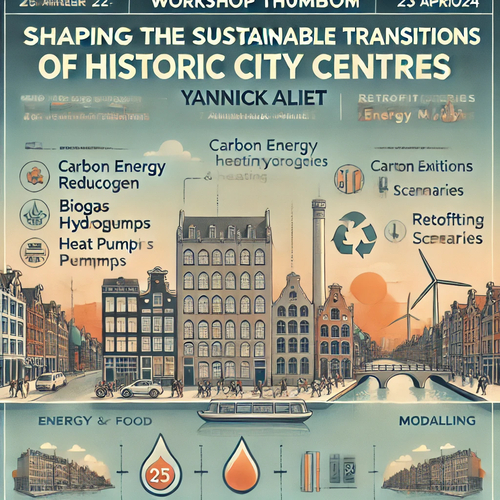Maéva Dang’s research uncovered beneficial retrofitting scenarios that balance the impending renewable energy transition with conservation of Amsterdam’s UNESCO World Heritage buildings. The results produced a novel biometric model that helps all homeowners and businesses involved make informed decisions at a neighbourhood level, so nobody has to embark on the path to green energy alone.
Using parametric design and bottom-up energy modelling based on the New Stepped Strategy, the research estimates that 70% of natural gas reduction could be achieved when upgrading the buildings. Home and business owners could make a quick scan of their buildings to understand the potential for renewable energy. Precise retrofitting scenarios uncover whether existing courtyards could house new ground systems, if proximity to canals means owners can make use of aquathermia, or whether to create a system with nearby supermarkets generating heat, for example.
“Typically, such modelling works on a project by project basis, but not an entire district. That is the reason for our research. You don't want to leave people behind. If you have a building block or a street with 20 addresses and 16 of them agreed to a strategy, you still have four remaining that are using the gas system. That's a suboptimal solution in the end,” explained Paul Voskuilen, Program Developer Urban Energy at AMS Institute.
With this open-source model, citizen groups can examine the characteristics of their neighbourhood, understand their heat reduction potential, and integrate that with collective problem solving for carbon neutrality, with grids that connect adjacent buildings. Individual seasonal storage systems, for example, could be integrated to serve others and remedy logistical issues. This technology was designed to make a meaningful contribution to Amsterdam’s policy on a gas-free future with sustainable heating and cooling.
“We think there’s even an opportunity to combine the installation of green heating systems with the renewal of Amsterdam’s 200km of quay walls in need of reconstruction,” added Dang.
